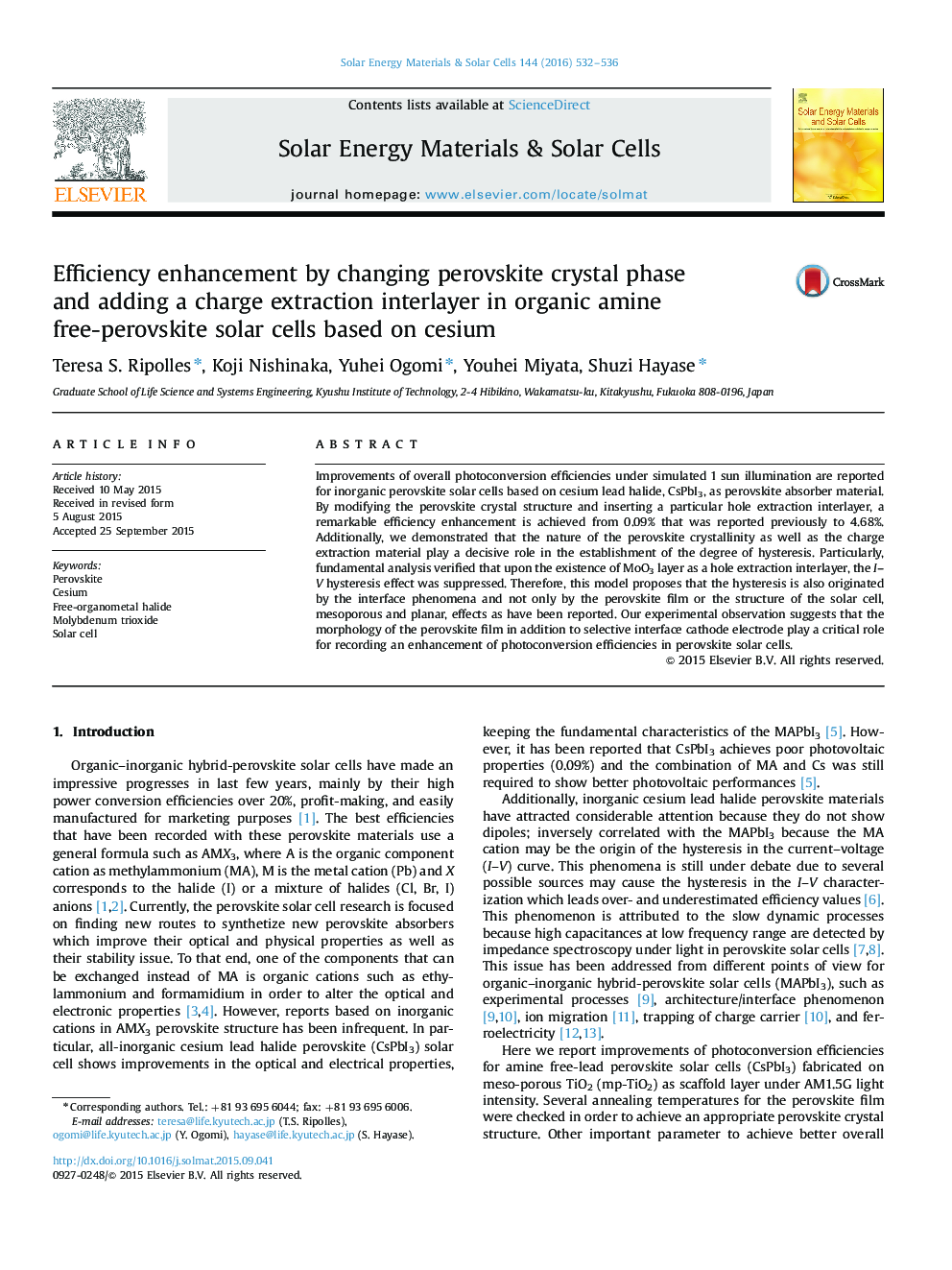| Article ID | Journal | Published Year | Pages | File Type |
|---|---|---|---|---|
| 6534953 | Solar Energy Materials and Solar Cells | 2016 | 5 Pages |
Abstract
Improvements of overall photoconversion efficiencies under simulated 1Â sun illumination are reported for inorganic perovskite solar cells based on cesium lead halide, CsPbI3, as perovskite absorber material. By modifying the perovskite crystal structure and inserting a particular hole extraction interlayer, a remarkable efficiency enhancement is achieved from 0.09% that was reported previously to 4.68%. Additionally, we demonstrated that the nature of the perovskite crystallinity as well as the charge extraction material play a decisive role in the establishment of the degree of hysteresis. Particularly, fundamental analysis verified that upon the existence of MoO3 layer as a hole extraction interlayer, the I-V hysteresis effect was suppressed. Therefore, this model proposes that the hysteresis is also originated by the interface phenomena and not only by the perovskite film or the structure of the solar cell, mesoporous and planar, effects as have been reported. Our experimental observation suggests that the morphology of the perovskite film in addition to selective interface cathode electrode play a critical role for recording an enhancement of photoconversion efficiencies in perovskite solar cells.
Related Topics
Physical Sciences and Engineering
Chemical Engineering
Catalysis
Authors
Teresa S. Ripolles, Koji Nishinaka, Yuhei Ogomi, Youhei Miyata, Shuzi Hayase,
